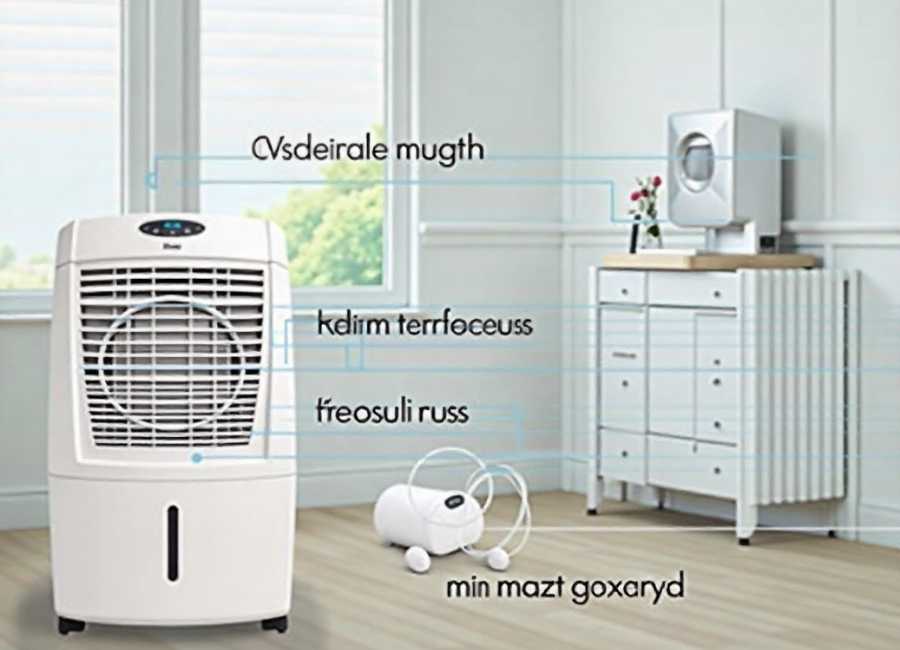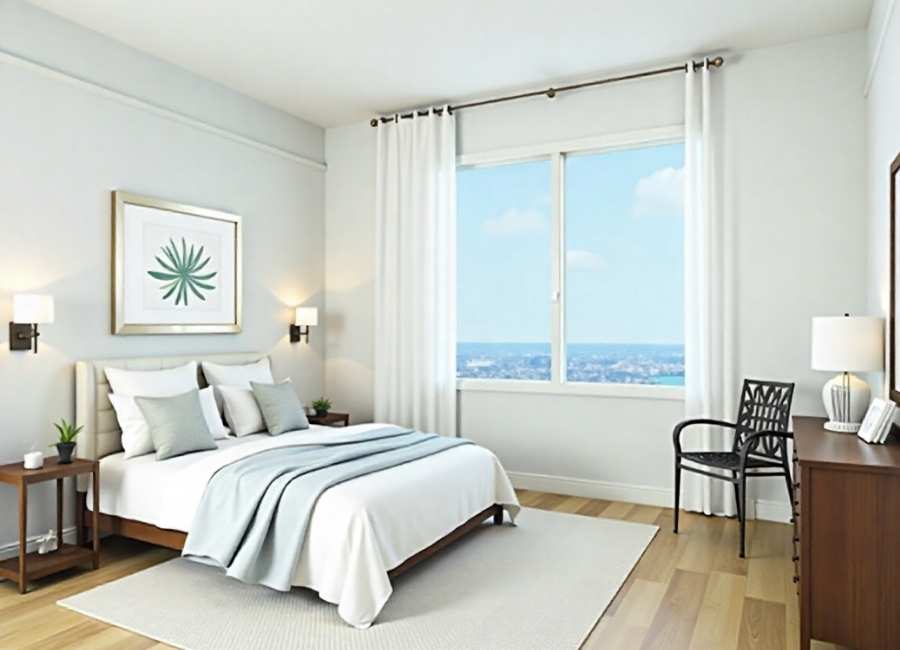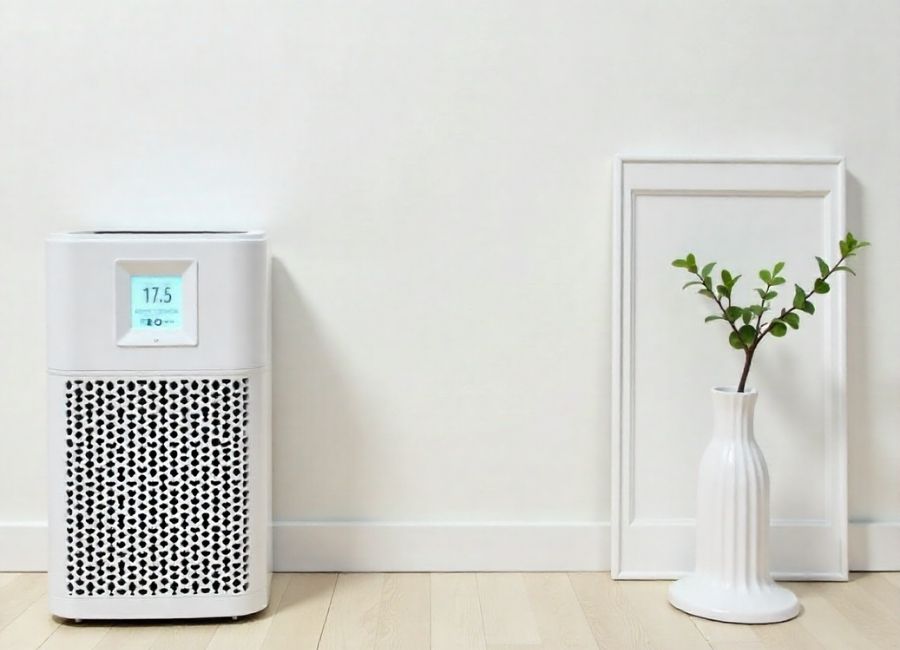An air purifier can be a game-changer for your home’s air quality, trapping dust, pollen, pet dander, and other airborne irritants. But after deciding to get one, a common question arises: how many air purifiers do I actually need? Is one enough for the whole house, or should I get a unit for every room?
The short answer is that it depends on your space and your air quality goals. While placing a single, powerful purifier in a central location might seem like a simple solution, it’s often not the most effective approach. Understanding a few key factors will help you determine the right number of purifiers to keep your entire home’s air fresh and clean.
This guide will walk you through everything you need to know to make an informed decision. We’ll cover room size, CADR ratings, and specific air quality concerns to help you create a healthier living environment.
One Purifier or Multiple: What’s the Best Strategy?

Placing a single air purifier in your home and expecting it to clean every room is like using a small air conditioner to cool an entire house—it’s just not practical. Air purifiers are designed to clean the air in a specific, enclosed area. (How Many Air Purifiers Do I Need? The Ultimate 2025 Guide, 2025) Walls, doorways, and even furniture can block airflow, preventing a purifier in the living room from having any significant impact on the air in your bedroom. (Where to Place an Air Purifier in the Living Room, n.d.)
For this reason, the most effective strategy is to place individual air purifiers in the rooms where you spend the most time. This targeted approach ensures that the air you breathe most often is as clean as possible.
Typically, this means focusing on areas like:
- Bedrooms
- Living rooms or family rooms
- Home offices
By placing units in these key areas, you address air quality where it matters most without needing a purifier for every single space in your home, like hallways or bathrooms.
Key Factors to Determine How Many Purifiers You Need

To figure out the right number of air purifiers for your home, you need to consider a few important variables. It’s not just about counting rooms; it’s about matching the purifier’s capability to the space it needs to clean.
1. Room Size and Square Footage
The most critical factor is the size of the room where you plan to place the purifier. Air purifiers come with a recommended room size, usually measured in square feet. (Air Purifier Size Calculator | What Size Air Purifier Do I Need?, n.d.) Using a purifier that’s too small for a large room will mean it struggles to clean the air effectively, running constantly without making much of a difference. (CADR Rating Explained: Complete Guide [2025 Standards], n.d.) Conversely, a large, powerful unit in a tiny room is overkill.
How to Calculate Room Size:
To find the square footage of a room, simply multiply its length by its width.
- Formula: Length (in feet) x Width (in feet) = Square Footage (sq. ft.)
- Example: A bedroom that is 12 feet long and 10 feet wide is 120 square feet (12 x 10 = 120).
Once you know the square footage of each key room, you can choose an air purifier rated for that specific size.
2. CADR (Clean Air Delivery Rate)
Beyond simple square footage, you should look at a purifier’s Clean Air Delivery Rate, or CADR. (Air purifier buying guide: How to choose the best model for your home, n.d.) This number, measured in cubic feet per minute (CFM), tells you how quickly the purifier can clean a room of a certain size. The higher the CADR, the faster it filters the air.
The Association of Home Appliance Manufacturers (AHAM) provides three CADR numbers for each certified purifier, representing its effectiveness at removing:
- Tobacco Smoke
- Pollen
- Dust
These particles have different sizes, so the ratings help you understand the purifier’s performance across a range of common pollutants.
The “Two-Thirds Rule”:
A helpful guideline for using CADR is the “two-thirds rule.” Your air purifier’s smoke CADR rating should be at least two-thirds of the room’s square footage. (Air Filtration Standards, n.d.)
- Formula: Room Square Footage x (2/3) = Minimum Smoke CADR
- Example: For a 150 sq. ft. room, you’d want a purifier with a smoke CADR of at least 100 (150 x 2/3 = 100).
Choosing a purifier that meets this standard ensures it can circulate and clean the air in that room efficiently, providing approximately five air changes per hour (ACH). (Air Filtration Standards, n.d.)
3. Air Changes Per Hour (ACH)
ACH indicates how many times a purifier can clean the entire volume of air in a room within one hour. (Air changes per hour, n.d.) For general air quality improvement, a rating of 4-5 ACH is recommended. (How Much Ventilation Is Enough?, 2024) This means the air in the room is completely filtered every 12 to 15 minutes.
If you have specific health concerns, you may need a higher ACH:
- Allergies or Asthma: People with respiratory issues benefit from more frequent air filtration. Look for purifiers that offer 5-6 ACH to keep allergens like pollen and pet dander at bay. (Air Purifier Size Calculator | What Size Air Purifier Do I Need?, n.d.)
- High-Pollution Areas: If you live near a busy road or in an area with frequent wildfires, a higher ACH will help remove smoke and other fine particles more rapidly. (Do Air Purifiers Help with Wildfire Smoke?, n.d.)
Most manufacturers list the ACH for their recommended room size on the product packaging or in the specifications. (Air purifier buying guide: How to choose the best model for your home, n.d.)
Where Should I Put My Air Purifiers?

Once you’ve determined how many units you need, placement is the next step. Focus on the rooms where you and your family spend the most time.
- Bedrooms: This is arguably the most important room for an air purifier. You spend a large, continuous block of time here every night. Clean air in the bedroom can lead to better sleep and reduced morning allergy symptoms. (The Ultimate Air Purifier for Allergy Relief in the Bedroom: IQAir HealthPro Plus, 2025)
- Living Room / Family Room: As a central gathering spot, the living room is another high-priority area. A purifier here can help reduce dust, pet dander, and odors, making the space more comfortable for everyone.
- Home Office: If you work from home, you spend a significant portion of your day in your office. An air purifier can help improve focus and reduce exposure to airborne irritants while you work.
- Kitchen: While not always a top priority, a purifier in or near the kitchen can help eliminate cooking odors and smoke.
If your budget is limited, start with one purifier in the bedroom. You can always move it to the living room during the day and back to the bedroom at night. As your budget allows, you can add more units to other key areas.
Your Path to Cleaner Air
Deciding how many air purifiers you need doesn’t have to be complicated. Instead of searching for one magic unit to cover your entire house, adopt a room-by-room strategy. By focusing on the spaces where you spend the most time, you can create zones of clean air that have a real impact on your well-being.
Start by measuring your priority rooms, checking the CADR and ACH ratings on potential models, and placing your first unit in the bedroom. From there, you can gradually expand to other areas of your home. This targeted approach is not only more effective but also more budget-friendly, allowing you to build a comprehensive clean-air solution over time.











